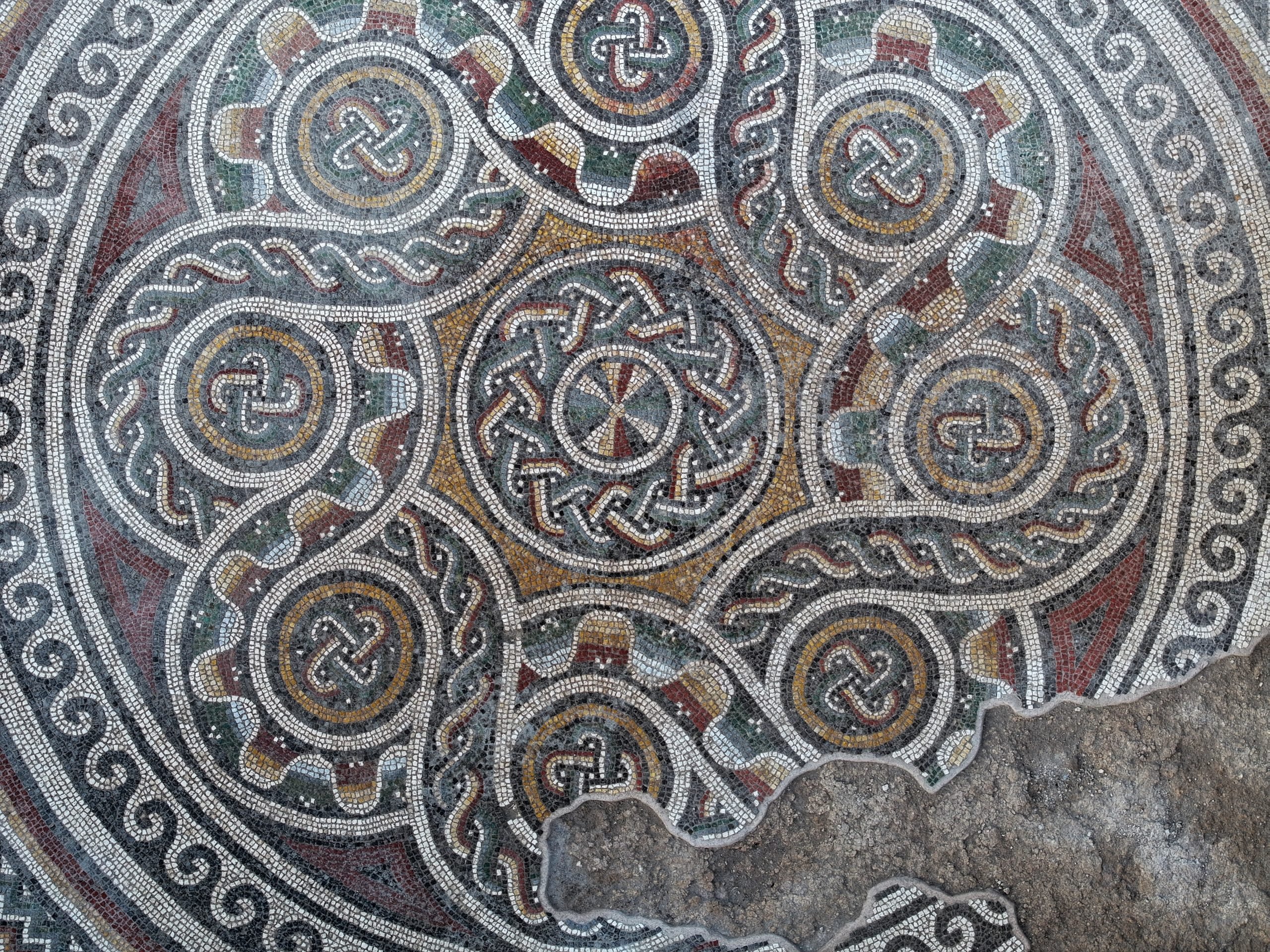
Archaeological excavations in the Incesu district of the Kayseri province in Central Anatolia, Turkey have turned up the largest floor mosaic in the Cappadocia region.
Measuring a whopping 600 square meters or more than 6,400 square feet, the tiled floor was uncovered in the Örenşehir neighborhood, within a villa that is estimated to date back to the 4th century. The research, ongoing for three years now, has been carried out by the Nevşehir Hacı Bektaş Veli University, with the backing of the Kayseri Metropolitan Municipality.
According to the university’s Can Erpek, who directed the excavation, the villa has roots in the Roman and Byzantine eras and was used long after the Turks arrived in Anatolia. It encompassed a vast area and about 33 rooms, with “highly valuable” floor mosaics indicating the structure was a “high-level residence.”
“In the Central Anatolia Region, which includes the Cappadocia region, we do not see such a large residence with floor mosaics,” Erpek said in a statement, adding, “We have not yet fully reached the boundaries of this residence.”
The excavation site in the Incesu district of Kayseri in Central Anatolia. Photo: courtesy of the Kayseri Metropolitan Municipality.
In a statement, Şükrü Dursun, Kayseri’s provincial director of culture and tourism, further highlighted findings such as a Latin inscription in an area believed to be a reception hall, Greek engravings, and other geometric mosaics.
In particular, Erpek pointed out the discovery of the name “Hyacinthos” in the inscriptions, which the archaeologists believe belongs to an administrator and the villa’s one-time resident.
Kayseri rose from the foundations of an ancient city known as Mazaca, a key stop along trade routes between the Greek colony of Sinope to Euphrates. In the fourth century, the province formed part of the thriving cultural landscape of Anatolia, which prospered under Roman rule. Kayseri also served as a hub of Christianity during that time, housing a major monastic complex, built by Saint Basil the Great, which has not survived.
See more images of the mosaic below.
An aerial view of the excavation site in the Incesu district of Kayseri, Turkey, on November 10, 2023. Photo: Sercan Kucuksahin/Anadolu via Getty Images.
Detail of the floor mosaic excavated in the Incesu district of Kayseri, Turkey, on November 10, 2023. Photo: Sercan Kucuksahin/Anadolu via Getty Images.
An aerial view of the excavation site in the Incesu district of Kayseri, Turkey, on November 10, 2023. Photo: Sercan Kucuksahin/Anadolu via Getty Images.
An aerial view of the excavation site in the Incesu district of Kayseri, Turkey, on November 10, 2023. Photo: Sercan Kucuksahin/Anadolu via Getty Images.
Detail of the floor mosaic excavated in the Incesu district of Kayseri, Turkey, on November 10, 2023. Photo: Sercan Kucuksahin/Anadolu via Getty Images.